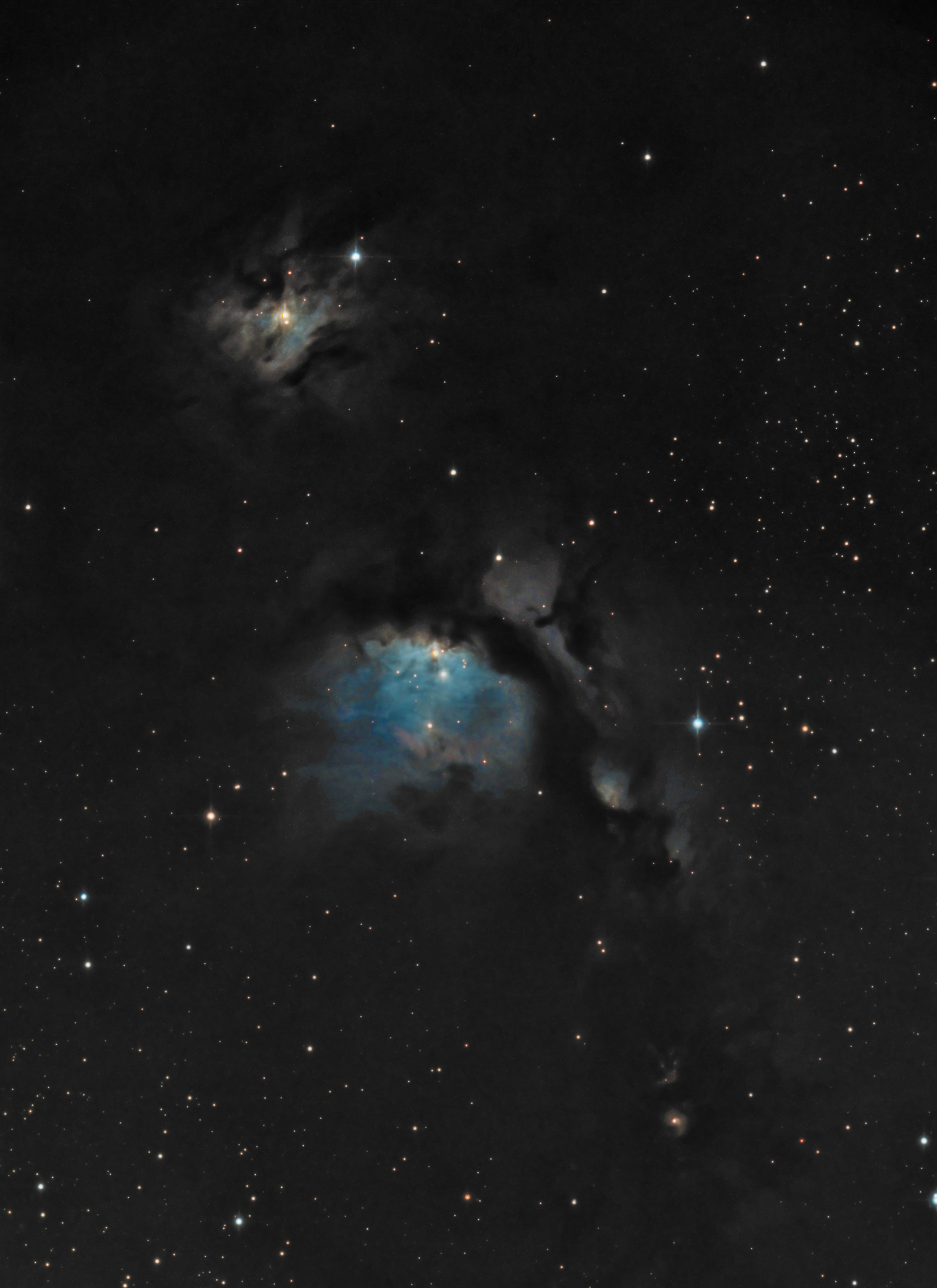
Target Details
Messier 78 , also known as NGC 2068, is a reflection nebula in the constellation Orion. M78 is the brightest diffuse reflection nebula of a group of nebulae that includes NGC 2064, NGC 2067 and NGC 2071.
This group belongs to the Orion B molecular cloud complex and is about 1,350 light-years from Earth. M78 is easily found in small telescopes as a hazy patch and involves two stars of 10th and 11th magnitude. These two B-type stars, HD 38563 A and HD 38563 B, are responsible for making the cloud of dust in M78 visible by reflecting their light.
Capture Details
Data captured across 12 nights between 3rd November, 2018 & 4th February, 2019.
Imaged as a 1x2 Mosaic.
77x 2 minute exposures with Blue filter (Binned 2x2).
91x 2 minute exposures with Green filter (Binned 2x2).
80x 2 minute exposures with Red filter (Binned 2x2).
289x 3 minute exposures with Luminance filter.
Total Exposure = 22.6 hours.
Equipment Details
Skywatcher Quattro 200 CF
NEQ6 Pro
Atik 428EX Mono
Skywatcher ST-80
QHY5L-II
Processing Details
This image was processed in Pixinsight & Lightroom.
Calibration and Stacking in Pixinsight using Batch PreProcessing
Dynamic Crop - To remove black edges & integration artifacts. (Each Channel & Pane)
Dynamic Background Extraction - To remove gradients. (RGB & Lum separately)
Channel Combination - To combine RGB channels.
Photometric Colour Calibration - To calibrate colours (Each Pane separately).
SCNR - To remove green cast (Each Pane separately).
Deconvolution - To bring out some fine detail & tighten stars, 50 iterations. (Luminance only, each Pane separately)
LRGB Combination - To blend my luminance image with my RGB image (Each Pane separately).
Histogram Transformation - To align brightness of both panes.
Star Alignments & Gradient Merge Mosaic - To merge two panes into one image.
Histogram Transformation - To stretch the LRGB image.
Channel Extraction - To extract Luminance.
Multiscale Median Transform - To extract Large Scale structures from Luminance Image.
Pixelmath - To extract Small scale structures (Original minus Large Scale)
Histogram Transformation - Small stretch to highlight dust, range mask in place to protect nebula core. (Large Scale only)
Local Histogram Equalistion - To boost contrast of dust, previous mask in place. (Large Scale only)
Curves - To boost dust, previous mask in place. (Large Scale only)
ATrous Wavelet Transform - To boost small scale dust. (Small Scale only)
Histogram Transformation - To bring up small scale dust. (Small Scale only)
Pixelmath - Recombine Large & Small scale images.
LRGB Combination - To recombine dust enhanced luminance with original image.
Histogram Transformation - To clip blacks slightly.
HDR Multiscale Transform - To regain some detail in the nebula core, with starmask in place.
TVGDenoise - To denoise background, with inverted rangemask.
Unsharpmask - To sharpen with mask in place to exclude stars & background.
Curves Transformation - To boost contrast.
Curves Transformation - To boost saturation, with starless range mask.
Curves Transformation - To boost desaturate background, with rangemask in place.
Histogram Transformation - To clip background blacks slightly, with rangemask in place.
Curves Transformation - To boost saturation in nebula, with starless rangemask in place.
Export as JPEG and import into Lightroom.
Boost Contrast (+15)
Darken Shadows (-75)
Increase Blue Saturation (+50)
Decrease Orange Saturation (-50)
Export final JPEG for upload.
